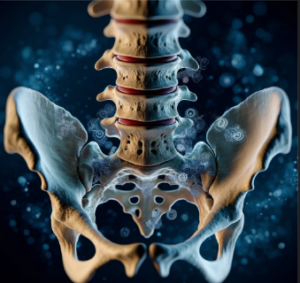
The human vertebral column is a marvel of natural engineering, providing structural support, flexibility, and protection for the spinal cord. It consists of 33 vertebrae, which are categorized into five regions: cervical, thoracic, lumbar, sacral, and coccygeal.
- Cervical Spine (C1-C7): The cervical spine comprises the first seven vertebrae and supports the head’s weight. The first two, C1 (atlas) and C2 (axis), are specialized to allow for the head’s rotation and nodding. The cervical vertebrae are distinguished by the presence of foramina in their transverse processes, which allow for the passage of the vertebral artery.
- Thoracic Spine (T1-T12): The twelve thoracic vertebrae connect to the ribs, providing stability and protecting the thoracic organs. These vertebrae are characterized by longer spinous processes and facets for rib articulation.
- Lumbar Spine (L1-L5): The five lumbar vertebrae are the largest and bear the body’s weight. They are designed for stability and flexibility, allowing for bending and twisting movements.
- Sacral Spine (S1-S5): The five sacral vertebrae are fused to form the sacrum, which connects the spine to the pelvis. The sacrum is key in distributing weight to the hips and forming the posterior wall of the pelvic cavity.
- Coccygeal Spine (Co1-Co4): The coccyx, or tailbone, consists of four fused vertebrae and serves as an attachment site for ligaments and muscles of the pelvic floor.

The vertebral column is held together by ligaments and muscles, providing stability and movement. Intervertebral discs between the vertebrae act as shock absorbers and allow for flexibility. These discs consist of a tough, fibrous outer layer (annulus fibrosus) and a gel-like center (nucleus pulposus).
The spinal cord runs through the vertebral canal, with spinal nerves exiting between each vertebra through the intervertebral foramina. These nerves branch out to various parts of the body, carrying signals between the brain and muscles, skin, and other organs.
The joints in the vertebral column include the intervertebral joints (between the vertebrae), facet joints (between the processes of adjacent vertebrae), and the sacroiliac joints (between the sacrum and ilium of the pelvis).
Understanding the complexity of the vertebral column is crucial for professionals in medical and health-related fields, providing insights into the diagnosis and treatment of spinal disorders and injuries.








